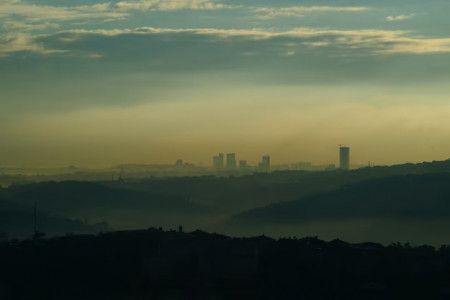In Serbia, the air is officially excessively polluted in 15 cities and agglomerations. This is the air quality assesment for 2020, which was published by the State Environmental Protection Agency in September 2021. For the assessment of the air in the previous year, 2021, we will wait for September this year. What kind of air we have been breathing so far this year, we will officially find out, you guessed it, only in the fall of 2023.
When observing the results obtained from the official air quality monitoring system, it is true that the air in Serbia is clean practically only in places where there is no comprehensive air quality monitoring. For the occasion of World Environment Day, the Belgrade Open School and the National Environmental Association NEA, prepared an analysis of air quality data obtained from citizen owned sensors, through the X-ECO application, in the course of 2022. The number of days with excessive concentration of PM10 particles, which is legally defined, was used as a criterion. Annually, the daily limit concentration of PM10 particles of 50 μg/m3 must not be exceeded more than 35 times.
The results obtained from citizen owned sensors show a high level of air pollution across the country. The annual "stockpile" of 35 days of "permitted" excessive pollution is pretty much spent in many local communities, as the causes of pollution across the country are very similar. Namely, in the winter months, local stoves and heating plants that use fossil fuels (fuel oil, coal), with traffic and industry, have an uncontrolled impact on the increased level of pollutants above permissible and recommended values, which is detrimental to the health of all citizens, especially sensitive category, such as children, the elderly and people with chronic diseases.
The city of Šabac is in the infamous first place in terms of air pollution, since the daily limit concentration of PM10 particles has been exceeded in several places: 43 days of excessive pollution were recorded in Pilota Ilića Street, while 105 days of excessive pollution were recorded in Kneza Lazara Street. The list of cities where there were over 100 days of excessive pollution is completed by Knjaževac (also 105), Zaječar, Požarevac and Kučevo. Leskovac, Gornji Milanovac, Aleksinac, Negotin, Sremska Mitrovica, Kula, Prokuplje, Majdanpek, Prijepolje, Brodarevo, Bosilegrad, Trstenik, Požega, Kruševac, Kovačica, Bela Palanka, Surdulica, Bečej also spent the annual limit of 35 days of excessive pollution. Senta, Ruma, Arandjelovac, Mladenovac, Kovin, Osečina. Among these cities, there are places where official state and/or local monitoring has been established, as well as places where there are only sensors installed by citizens. The prevalence and functioning of the official air monitoring system depends on the responsibility and timeliness of both the State Environmental Protection Agency and local self-government units that are obliged to establish local air quality monitoring, and to share the results of that monitoring with the Agency. Challenges are particularly present in the field of local monitoring, as cities and municipalities largely do not establish an adequate level of air quality monitoring. This practically means that, in the absence of measurements, there is no legal basis for the adoption and implementation of legally prescribed measures to reduce the level of air pollution.
In the absence of official data, and with justified fear, citizens are currently finding a solution in alternative methods, in order to be informed at least in the short term about the state of air quality in their environments. We request from responsible institutions and individuals at all levels to work dedicatedly on improving air quality monitoring throughout the country, both in the field of expanding and maintaining the state network, and in the field of establishing comprehensive local monitoring and timely exchange of information, as without adequate measurements there can not be adequate measures for clean air.
In the Annex, you can find a table with the results of citizen monitoring in the period from 1.1.2022. to 31.5.2022, in cities that do not have automatic analyzers of suspended particles within the state or local network.
Photo source: Freepik.com

